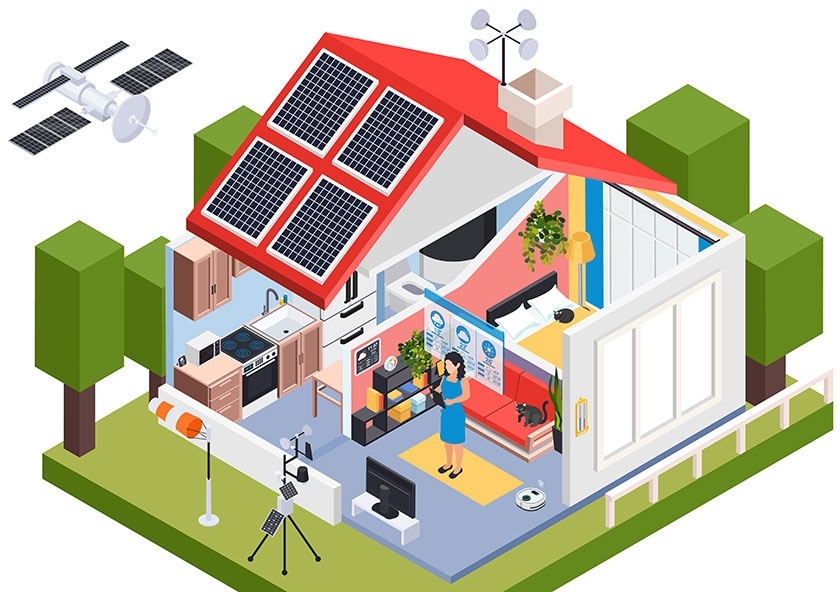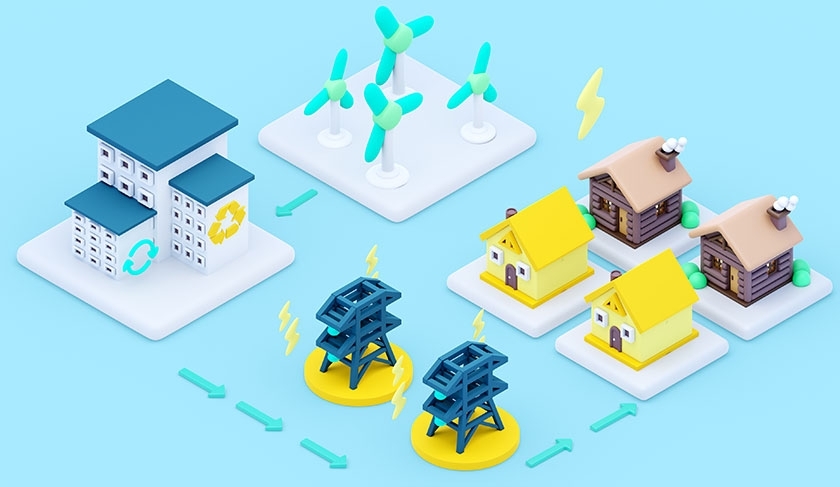As the world continues to embrace renewable energy sources, residential energy storage systems have emerged as a game-changer in the quest for sustainable power. These systems allow homeowners to store excess energy generated by their solar panels or other renewable sources, enabling them to harness clean energy even when the sun isn't shining or during power outages. In this article, we will explore the benefits and components of residential energy storage systems, highlighting their role in revolutionizing the way we power our homes.
Residential Energy Storage System (RESS) is a system that allows homeowners to store excess energy generated from renewable sources, such as solar panels, for later use. It consists of a battery storage unit, an inverter, and a monitoring system.
The primary purpose of a residential energy storage system is to store excess energy generated during periods of high production, such as sunny days, and use it during times of low production or high energy demand, such as at night or during peak hours. This helps homeowners reduce their reliance on the grid and maximize the use of their renewable energy sources.

The battery storage unit is the core component of a residential energy storage system. It stores the excess energy generated by the renewable energy source, such as solar panels, for later use. The battery can be charged and discharged multiple times, allowing homeowners to use the stored energy when needed.
The inverter is responsible for converting the direct current (DC) energy stored in the battery into alternating current (AC) energy, which is the type of electricity used in most household appliances and devices. The inverter ensures that the energy stored in the battery is compatible with the electrical system of the home.
A monitoring system is often included in a residential energy storage system to provide homeowners with real-time information about the energy production, consumption, and storage. This allows homeowners to track their energy usage, optimize their energy management, and make informed decisions about when to use stored energy.
a. Lithium-Ion Batteries:
Lithium-ion batteries are the most common type of battery used in residential energy storage systems. They offer high energy density, longer lifespan, and efficient charging and discharging capabilities.
b. Lead-Acid Batteries:
Although less common, lead-acid batteries are still used in some residential energy storage systems. They are more affordable but have a shorter lifespan and lower energy density compared to lithium-ion batteries.
c. Flow Batteries:
Flow batteries are a newer technology gaining traction in the residential energy storage market. They offer longer lifespan and scalability, making them suitable for larger energy storage needs.

Residential Energy Storage Systems (RESS) work by storing excess energy generated from renewable sources, such as solar panels, for later use. Here is a breakdown of how these systems typically operate:
Energy Generation:
The process begins with the generation of renewable energy, usually through solar panels installed on the residential property. When sunlight hits the solar panels, they convert the energy into direct current (DC) electricity.
Power Conversion:
The DC electricity generated by the solar panels is then sent to an inverter, which converts it into alternating current (AC) electricity. AC electricity is the standard form of electricity used in homes and can power various appliances and devices.
Energy Consumption:
The AC electricity produced by the inverter is used to power the electrical loads within the home. This includes appliances, lighting, electronics, and other devices that require electricity.
Excess Energy Storage:
If the energy generated by the solar panels exceeds the immediate energy consumption needs of the home, the excess energy is directed to the residential energy storage system. The excess energy charges the batteries within the storage system for later use.

Battery Storage:
The energy storage system consists of one or more batteries that store the excess energy. These batteries are typically lithium-ion or lead-acid batteries, which can store and release energy efficiently.
Energy Management:
A control system or energy management system monitors the energy production, consumption, and storage within the residential energy storage system. It ensures that the energy flows smoothly between the solar panels, inverter, battery storage, and the electrical loads in the home.
Energy Discharge:
When the energy consumption in the home exceeds the energy being generated by the solar panels, or during periods of high energy demand, the stored energy in the batteries is discharged. The energy is converted back to AC electricity by the inverter and used to power the electrical loads in the home.
Grid Interaction:
In some cases, residential energy storage systems can be connected to the electrical grid. This allows homeowners to sell excess stored energy back to the grid during times of high demand or receive electricity from the grid when the stored energy is depleted.
Monitoring and Control:
Homeowners can monitor the performance of their residential energy storage system through a monitoring system. This system provides real-time data on energy production, consumption, battery status, and overall system performance. It allows homeowners to optimize their energy usage and make informed decisions about when to use stored energy.
a. Energy Independence:
By storing excess energy, homeowners can reduce their reliance on the grid and have a reliable source of power during outages or peak demand periods. This promotes energy independence and provides peace of mind.
b. Cost Savings:
Residential energy storage systems allow homeowners to maximize their use of self-generated energy, reducing the need to purchase electricity from the grid. This can lead to significant cost savings on monthly utility bills over time.
c. Time-of-Use Optimization:
Some energy storage systems offer the ability to optimize energy usage based on time-of-use rates. Homeowners can store energy during off-peak hours when electricity rates are lower and use it during peak hours when rates are higher, further reducing costs.
d. Environmental Impact:
By utilizing stored energy from renewable sources, residential energy storage systems contribute to a greener and more sustainable future. They help reduce reliance on fossil fuels and lower carbon emissions, making a positive impact on the environment.

a. Capacity:
Assess your household's energy consumption and storage needs to determine the appropriate capacity of the energy storage system.
b. Compatibility:
Ensure that the energy storage system is compatible with your existing energy source, whether it's solar panels or another renewable energy system.
c. Efficiency:
Look for energy storage systems with high round-trip efficiency, which indicates how much energy is lost during the charging and discharging process.
d. Warranty and Lifespan:
Consider the warranty and expected lifespan of the energy storage system to ensure long-term reliability and value for money.
Residential energy storage systems are revolutionizing the way we power our homes, offering energy independence, cost savings, and environmental benefits. By harnessing the power of renewable energy sources and storing excess energy, homeowners can reduce their reliance on the grid and contribute to a more sustainable future. As technology continues to advance, residential energy storage systems will play an increasingly vital role in creating a greener and more resilient energy landscape for our homes.